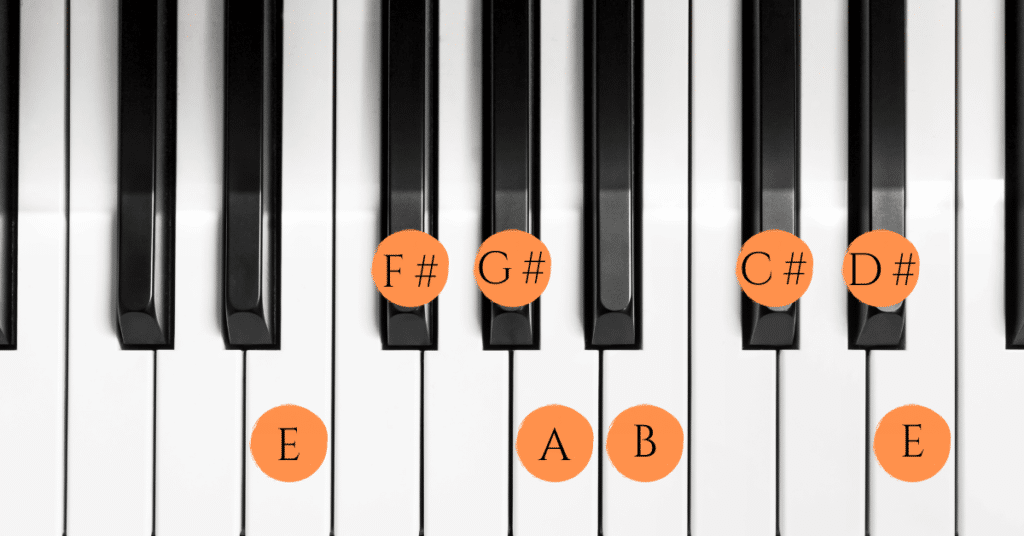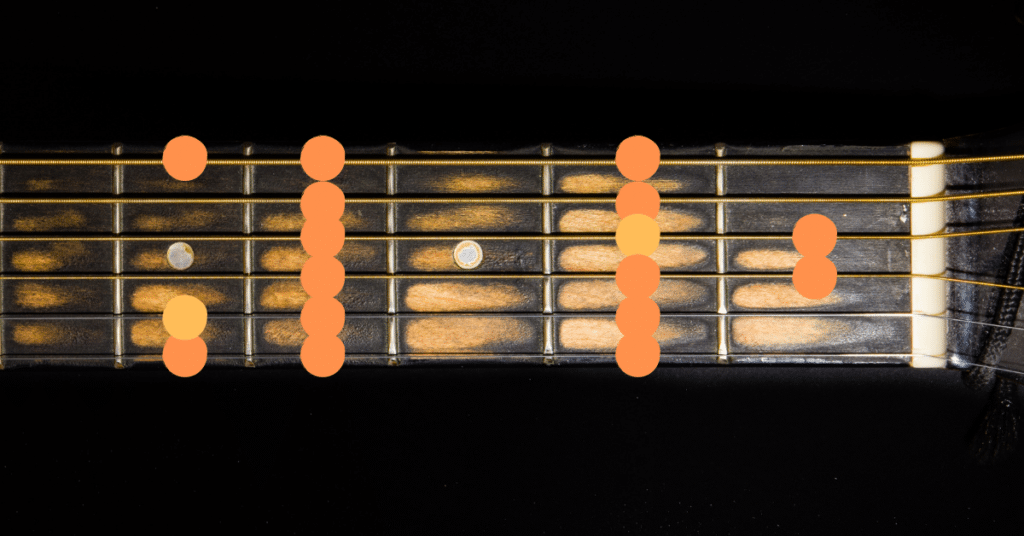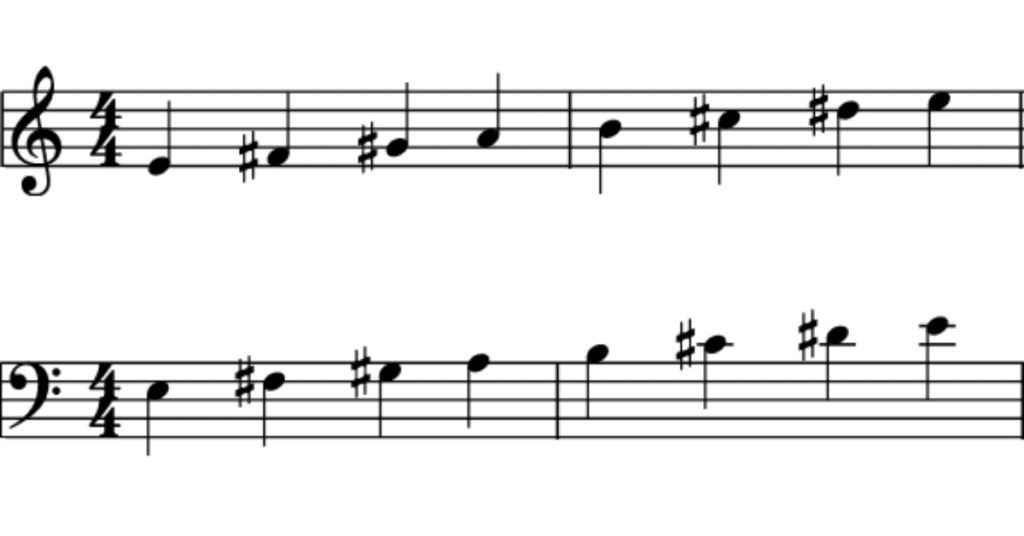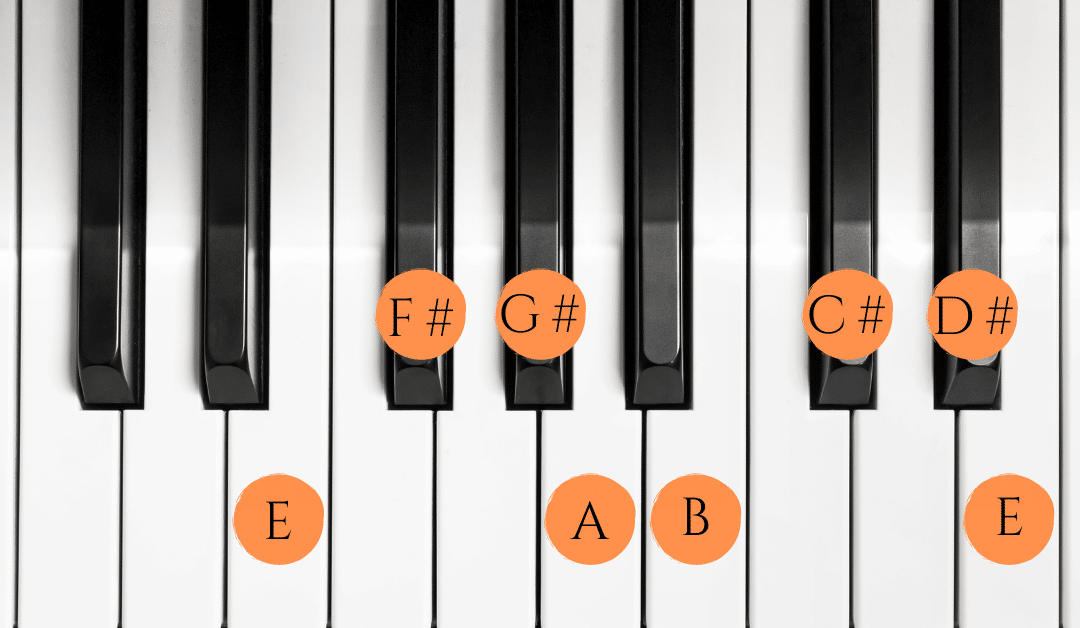The E major scale is a scale widely used in classical and popular music even if its execution is one of the most complicated for certain instruments. Like all scales, it provides many tools for the musician to develop compositional and improvisational skills, and is commonly found in lessons for advanced musicians. This scale is introduced once you have already mastered many other scales, so it is best to have practiced scales such as D or G before starting with the E major scale.
What is the E major scale?
The E major scale is nothing more than a scale of musical notes that are structured in intervals of one tone between each degree, with the exception of degrees III – IV and VII – I, where the distance is half a tone, and whose main note (commonly called tonic) is E. That is, the E major scale degree is built starting from the note E and continues leaving a tone between each note, except between the third and the fourth and between the seventh and the first.
In this way, we can say that the notes that make up the E major scale are:
- I – E (E) : tonic
- II – F sharp (F#) : supertonic
- III – G sharp (G#) : through
- IV – The (A): Subdominant
- V – Si (B) : Dominant
- VI – C sharp (C#) : Superdominant
- VII – D sharp (D#) : Sensible or subtonic
Thus, it is the tonic E which, being the first note of the scale, gives the scale its name.
E major scale patterns
The E major scale patterns on some instruments, such as the piano or the guitar, are a very didactic tool that helps to reinforce the learning of this scale. These instruments have a visual character that allows them to identify notes and sequences of notes more easily than instruments such as the violin, viola, cello or wind instruments. So, see what the E major scale pattern would look like in an octave on the piano:

Note that the notes of the E major scale can be found more spread out over the black and white keys of the piano than other scales. This makes the scale more difficult to visualize at first sight, since the notes on the white keys are usually the first to be identified and in this case there are only three of them. This is why it is more common to study e chord scale when you already have a better command of the instrument. On the other hand, the guitar is also a very useful instrument for visualizing scale patterns. The following image illustrates one of these patterns on the mast:

Then, based on these forms we can create various melodic phrases along both instruments. On the piano the pattern is the same in all octaves, so only the altitude will vary. However, on the guitar you will not only find a difference between bass and treble, but the pattern will also change shape along the neck. To find them you can identify all the notes of the E major scale on each string, point them out and play them.
The E major scale and other instruments
The E major scale proposes an increase in the degree of difficulty when playing scales due to the fact that it has four accidentals (sharps or flats). On stringed instruments such as the violin, cello and double bass, greater skill in fingering is necessary, since very few strings on these instruments have any notes of this scale on their own. For example, the violin is tuned to the notes G, D, A and E, the latter two belonging to the E major scale. So, if we play this scale on the violin, we will have to step on four notes on the G string and four on the D string, which represents a great challenge for those people who are just starting to learn.
Harmonizing the E major scale
Harmonizing the E major scale increases the number of tools the scale provides the musician, both for study and composition. Harmonization will consist of forming chords on each note of the scale (see harmonizing major scales). Thus, when harmonizing the E major scale, taking into account that it has four accidentals (C sharp, F sharp, D sharp and G sharp), the following chords are obtained:
| Grade | Chord Name | Chord Formula |
| I | E Major | E |
| II | F sharp minor | F#m |
| III | G sharp minor | G#m |
| IV | A Major | A |
| V | B Major | B |
| VI | C sharp minor | C#m |
| VII | D sharp semi-diminished | D#Ø |
In this way, we could take a series of chords from the ones shown in the table and create combinations with them, playing one after the other. This would result in a chord progression in the key of E major, with the first chord (E) giving the key its name.
Importance of this harmonization
By harmonizing the E major scale we are not only adding new combinations to its notes, but we are also expanding the possibilities for composition and improvisation in the key of E major. The chords obtained are often combined in many ways and result in a variety of musical expressions. All this is left to the creativity of the musician so that, joining concepts of melody, harmony and rhythm, he can make music with his instrument.
These chords are often used to form the harmonic basis of songs written in the key of E major. Thus, the following examples of progressions can be taken as a basis for future compositions in this key.
E major chord progressions
- E – A – B – E
- E – F#m – A – B – E
- E – A – G#m – B – E
- E – B – E – A – A – G#m – E
- E – G#m – C#m – B – E
These progressions can be played one after the other following the tempo desired by the musician. At the same time, they can be accompanied by melodic lines created with the notes of the E major scale, adding (or not) external notes to the key in order to enrich the piece.
Musical notation of the scale
The musical notation of the E major scale also helps to understand what is going on in the e scale since it illustrates its structure. Studying this scale based on music reading helps to reinforce the basic principles of music theory and serves as a foundation for further study of songs written in the same key. In this way, having a greater skill in the reading of the E major scale, it will be easier to interpret a piece and, with it, to introduce arrangements and improvisation in order to adapt it to what the musician wants to transmit with it. In the following image you can see how to write the E major scale on a musical staff, both in G and F clef:

So, let’s suppose we get hold of some sheet music. The first thing we should do before proceeding to play any note on the instrument is to identify the key in which the piece is in. To know if a song is written in the key of E major based on its musical notation, we must make sure that it has four accidentals in its key signature. That is, the score should have a sharp in C, D, F and G in order to be in the key of E major. Then, once we have identified the key, we proceed to identify all the notes belonging to the E major scale on our instrument. This way, when we are going to play the piece, we already know that all the notes (with the exception of some chromaticism) should be notes belonging to the scale already located, thus speeding up the reading and interpretation.
Musical notation of the harmonized scale
Although the harmonized scale is usually written using American notation (G, Em, A, B#, etc), it is very useful to represent it with traditional musical notation in the study of theory. By writing the chords on a staff we can detail more clearly the notes that compose them and the distances between them. This helps the musician to understand the sonority of chords in the key of E major and provides an alternative for composing, since notes could be added to or subtracted from the chords directly in that notation.
E major and minor scales
The E major and E minor scales tend to be confused with each other. Even though they are built from the same note (E), they have a very different structure of tones and semitones, which causes their sonorities to be different. While the E major scale has a distance of one semitone between its third and fourth notes, the minor scale has a distance of one tone between them. This leads to the scale having different accidentals and thus different types of chords. Therefore, we can expect a song written in the key of E major to sound different from a song written in the key of E minor.
Intervallic distances of the E major scale
To better understand how the E major scale works, it is convenient to study the intervallic distances between each of its notes:
| E | – | F# | – | G# | – | L | – | B | – | C# | – | D# | – | E |
| – | 1T | – | 1T | – | 1/2T | – | 1T | – | 1T | – | 1T | – | 1/2T | – |
Thus, a slight change in some of these distances would completely alter the sonority that the scale already has.
E major relative scale
The relative scale of E major is the scale of C sharp minor. This relative scale has the same notes as the E major scale, its accidentals, and thus the same chords. That is, even though the E major scale and the E minor scale are not the same, we can find another scale that shares many characteristics with the E major scale. So, since both scales have the same notes, they can be written using the same key signature in musical notation. However, it should not be thought that the scale of E major and the scale of C sharp minor are one and the same key, as the functionality of both is different.
Now, if we wish to compose in the key of C sharp minor, we do not need to learn anything new, since it will be enough to use the notes of the E major scale and the chords obtained in its harmonization. However, the challenge is how to use those chords to compose in one key or another.
How do you know if a song is in E major or C sharp minor?
Basically you can compose in the key of E major using major chords of the harmonized scale such as E, A and B, while to compose in the key of C sharp minor you could use mostly the chords C#m, F#m and G#m. However, both keys use both major and minor chords, so it is useful to identify the chords on which the song rests. For example, if the song ends its verses on the E major chord, you would think that the key is E major. In the opposite case, if the song ends its verses on the C-sharp minor chord, one could think of the key of the relative scale. However, only detailed study of the piece and constant practice can help the musician to determine this.
Songs in the key of E major
The E major scale has been widely used since the baroque period of classical music, featuring in well-known compositions such as Antonio Vivaldi’s ‘Primavera’ concerto, Johann Sebastian Bach’s sonatas and Chopin’s nocturnes. On the other hand, in popular music it has been widely applied to styles such as blues, rock, ballad and hip-hop. The following songs can be taken as a reference:
- Norwegian Wood – The Beatles
- Summertime Sadness – Lana del Rey
- Thriller – Michael Jackson
- Nude – Radiohead
- Vultures – John Mayer
Note that some of these are not in the key of E major, but in the key of C sharp minor. Even so, they serve as a reference for the study of these scales.
Conclusion
The major scale of E is studied after having gone through the learning of scales such as D or G. It is very useful to visualize it on instruments such as the guitar and piano and, in turn, to write it with the help of traditional musical notation. It has been used since ancient times and is still very helpful today. With the use of its notes and chords you can create very varied compositions that communicate the desired expressiveness and guided by the creativity of the musician.

